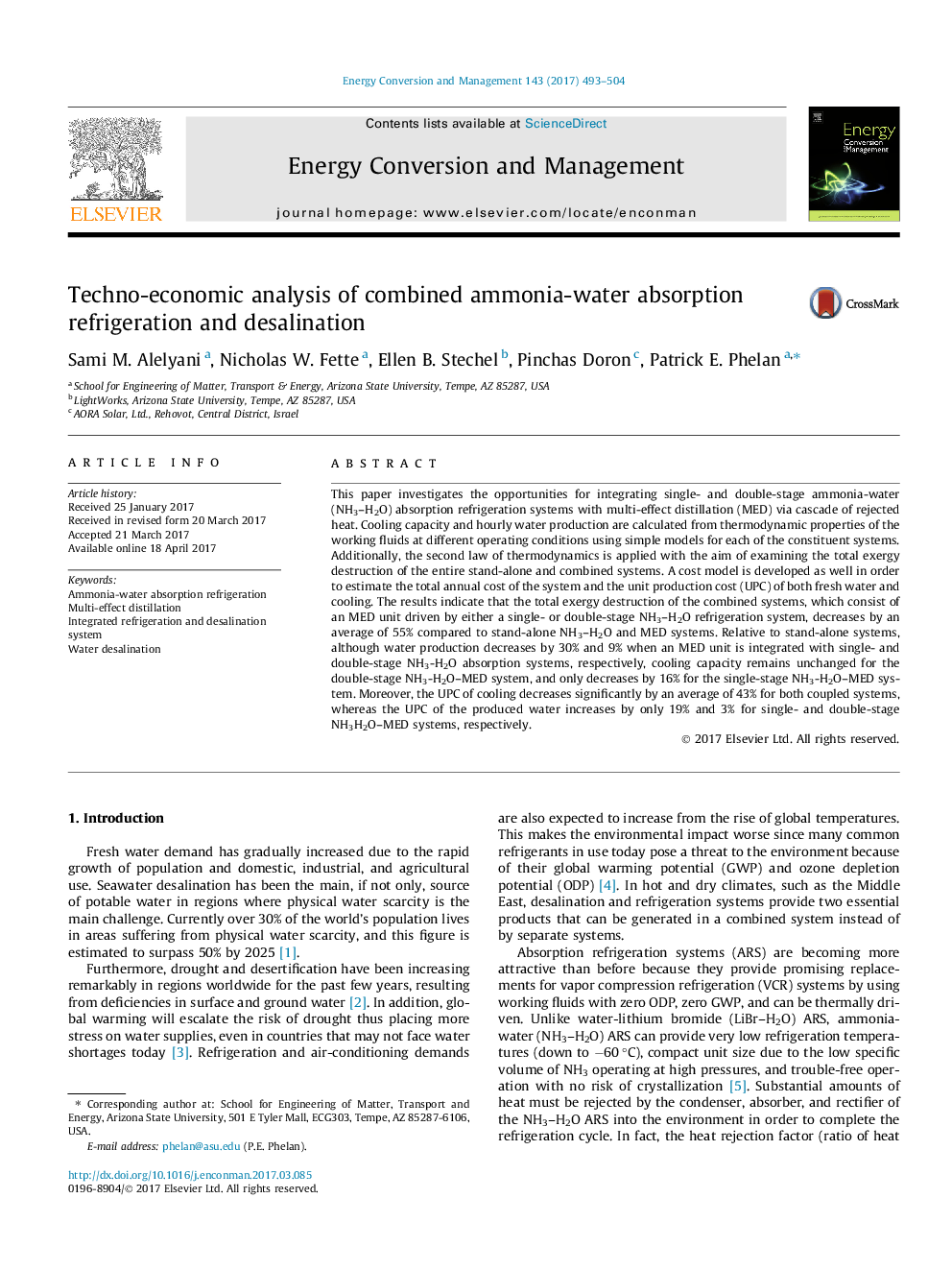| Article ID | Journal | Published Year | Pages | File Type |
|---|---|---|---|---|
| 5012768 | Energy Conversion and Management | 2017 | 12 Pages |
Abstract
This paper investigates the opportunities for integrating single- and double-stage ammonia-water (NH3-H2O) absorption refrigeration systems with multi-effect distillation (MED) via cascade of rejected heat. Cooling capacity and hourly water production are calculated from thermodynamic properties of the working fluids at different operating conditions using simple models for each of the constituent systems. Additionally, the second law of thermodynamics is applied with the aim of examining the total exergy destruction of the entire stand-alone and combined systems. A cost model is developed as well in order to estimate the total annual cost of the system and the unit production cost (UPC) of both fresh water and cooling. The results indicate that the total exergy destruction of the combined systems, which consist of an MED unit driven by either a single- or double-stage NH3-H2O refrigeration system, decreases by an average of 55% compared to stand-alone NH3-H2O and MED systems. Relative to stand-alone systems, although water production decreases by 30% and 9% when an MED unit is integrated with single- and double-stage NH3-H2O absorption systems, respectively, cooling capacity remains unchanged for the double-stage NH3-H2O-MED system, and only decreases by 16% for the single-stage NH3-H2O-MED system. Moreover, the UPC of cooling decreases significantly by an average of 43% for both coupled systems, whereas the UPC of the produced water increases by only 19% and 3% for single- and double-stage NH3H2O-MED systems, respectively.
Related Topics
Physical Sciences and Engineering
Energy
Energy (General)
Authors
Sami M. Alelyani, Nicholas W. Fette, Ellen B. Stechel, Pinchas Doron, Patrick E. Phelan,
